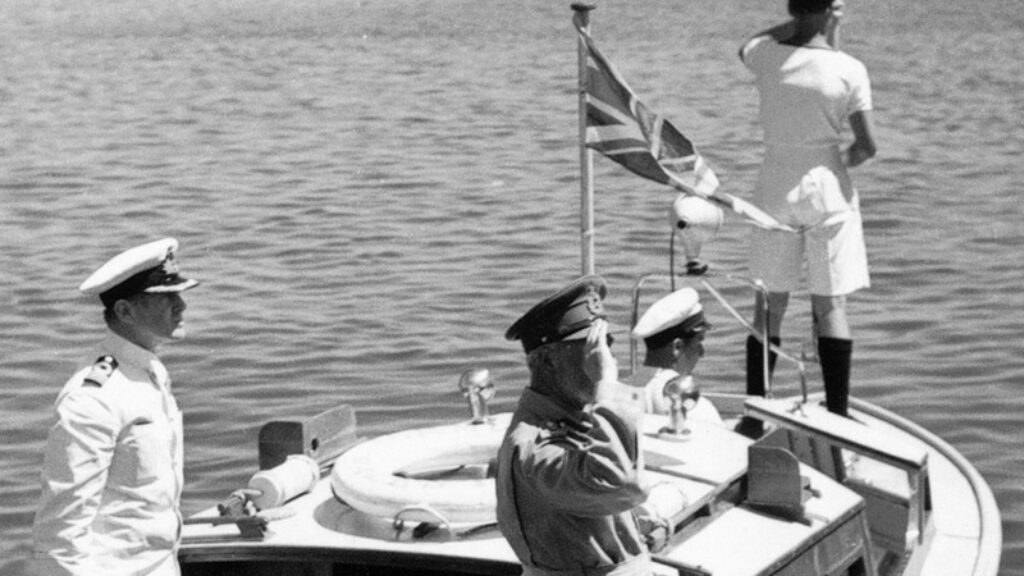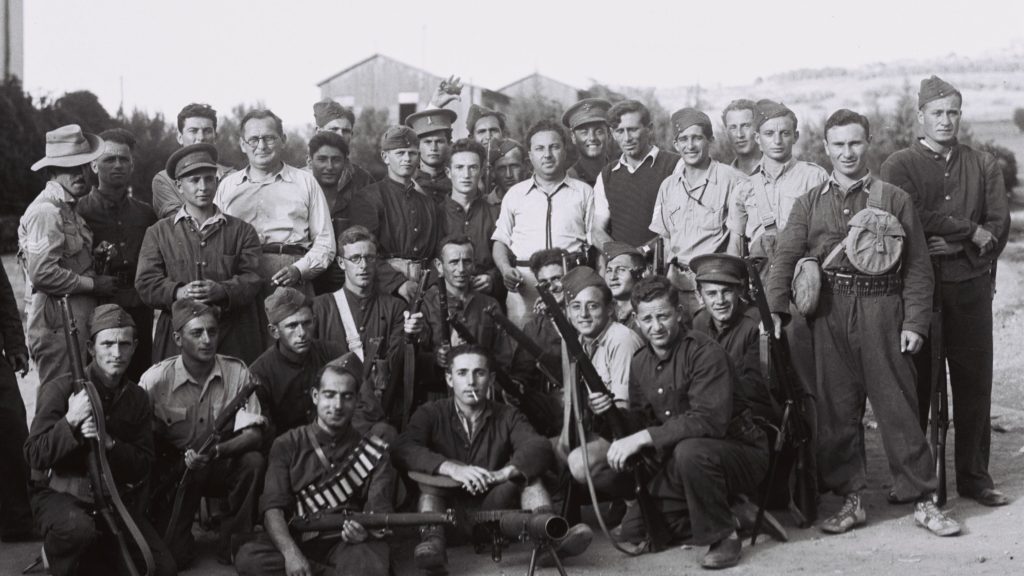And How Do You Like Israel?
Those of us who love Israel often imagine that its charms are irresistible. That may have been what Moshe Dayan was thinking when he went to see the co-pilot of a Libyan airliner shot down (with a tragic loss of more than 100 lives) when it strayed over Israeli-controlled airspace in February 1973. I remember listening long ago to a radio broadcast of Dayan’s visit to the injured man in a hospital—in Beersheva, if my memory serves me correctly. The enormous anxiety that the Libyan co-pilot must have felt on account of being in Israel at all had clearly been intensified beyond all measure by the unexpected arrival at his bedside of the one-eyed monster famed, loathed, and feared throughout the Arab world. In broken English, his weak voice quavering, the co-pilot greeted Dayan with a heap of awkward honorifics and salutations. He sounded like he was begging for his life. “And how do you like Israel?” Dayan cheerily responded.
This peculiar encounter took place less than six years after the Six-Day War, the conflict over which Dayan had presided as Israel’s minister of defense and which represented, as Joshua Muravchik reminds us, a critical turning point in the evolution of the Western world’s attitude toward Israel. In the decades before the war and during the fighting, Israel had basked in its approval; after the war, people tended to like Israel less and less, as a result of the processes that Muravchik deftly describes. What happened was, by his account, not primarily the fault of Israel itself but of large numbers of its former supporters, who either suffered from a failure of moral imagination or yielded to Arab pressure, or both.

The problem began on the revolutionary left, which already in 1968 was celebrating Yasser Arafat and the terrorists of Fatah as underdogs and “the comrades of such chic, romanticized figures as Ho Chi Minh and Che Guevara.” The Arab oil embargo in 1973 further softened the ground, as did the Arab countries’ anti-Israel campaign at the United Nations that culminated in the General Assembly’s passage of the infamous “Zionism is racism” resolution. On the European front, the Jewish-born but utterly alienated Austrian chancellor Bruno Kreisky strenuously strove to break the long-standing links between European socialists and Israel and to create sympathy for the PLO. In academia, the Palestinian-American professor of English Edward Said produced in 1978 his blatantly unhistorical but vastly influential attack on “orientalism” (in his book by the same name), which helped (as Said had very much wished) to redefine Zionism, as Muravchik puts it, “against its will as a movement of white people competing for land with people of color.” Said’s success in this venture “meant that from then on the Left would be aligned overwhelmingly and ardently against Israel.”
While locating the origins of the post-1967 anti-Israel animus squarely on the left, Muravchik does not exempt the right, in Israel itself, from responsibility for the deterioration in the atmosphere. He notes, without explicitly endorsing or criticizing, the commitment of Likud governments from 1977 onward to the settlement of the West Bank and Gaza and the opposition those policies generated overseas. Muravchik places greater emphasis, however, on the damaging impact of the Lebanon War of 1982, which was mired in deception, excessively ambitious, and “culminated in an especially vicious episode, the massacre of noncombatants in the Palestinian refugee camps of Sabra and Shatilla.” While he complains about the “selective indignation” of some of the people who lambasted Israel on this occasion after keeping silent about other, worse massacres in the Arab world in which Israel was not even indirectly involved, Muravchik seems to identify with those Israelis who felt that “their country had been complicit in a shameful act.” The punitive recommendations of the Kahan Commission that investigated the massacre, he says, “partially rehabilitated Israel’s reputation,” Muravchik notes:
But the harm done by the whole Lebanon venture was never fully repaired. Public opinion polls in the United States showed that support for Israel eventually returned to its pre-Lebanon War levels, but in Europe the recovery was only partial. The combined impact of Lebanon and Begin’s settlement-building campaign would become specters haunting Israel’s global standing.
Even though he highlights the way these ghosts troubled Israelis as well, Muravchik does not think that they scared Israel’s adversary culture into existence. This he traces to the worldwide collapse of socialism, which undermined Israel’s regnant ideology and left few people capable of “articulating a compelling vision of Zionism without the ‘Labor’ part.” What came to fill the vacuum, according to Muravchik, was an amorphous ideology called “post-Zionism,” many of whose adherents went so far as to abandon any loyalty at all to the idea of a Jewish state.
Muravchik’s sketch of Israel’s “adversary culture” ranges from a review of the “new historians”—Benny Morris, Avi Shlaim, and Ilan Pappé—who began in the late 1980s to debunk the standard Zionist/Israeli narrative to Israel’s equally subversive “critical sociologists,” such as Oren Yiftachel, to reporters and columnists and editors of Ha’aretz, including Gideon Levy and Amira Hass, who have relentlessly held their own country up to obloquy. He follows Anita Shapira in tracing the path of radical dissent from the new historians to other academics, but he doesn’t cast all of the blame on them.
In agreement with the now penitent “new historian” Benny Morris, Muravchik regards the late 20th-century anti-Israel trends in Israeli culture as more than anything else a local reflection of “the post-1960s rise of Leftism throughout academia in America and Europe.” Whatever may have been their sources of inspiration, however, they constitute a dire menace:
For those who wish to rally people to the cause of Israel’s destruction, these alienated Israelis constitute an unmatched resource. They provide a trove of home-grown testimony that their country is guilty of every imaginable crime and sin . . . America’s adversary culture was no less extreme in its alienation, no less ferocious in its condemnations of its own country. But America, the mightiest country in history, is comparatively invulnerable to the words of its detractors. The same cannot be said for Israel.
Readers who share Muravchik’s concern about the worldwide reach of Israel’s alienated intellectuals may nevertheless find his account of their intellectual roots somewhat puzzling. The story he tells is one of refugees from the left, disoriented by the failure of socialism, who in the end find their bearings, once again, on the left. What does he think is happening?

Muravchik’s analysis of this matter comes into clearest focus when he turns from Israeli intellectuals to anti-Israel activists in Western countries. After citing the late Rachel Corrie’s complaints about racism, classism, and sexism, he notes that her “litany of malign-isms reflected the metamorphosis of Leftism. Conflict between groups continued to be seen as the engine of progress, as Marx had posited, but particularly after the upheavals of the 1960s race and other demographic categories replaced class as the crucial axis.” The left had never been friendly to Israel, Muravchik observes, but in its “new interpretation of history, Israel became a more central target.”
Among those whom he identifies as foes of the Jewish state on account of its location “on the wrong side of the Left’s new paradigm,” Muravchik pays special attention to the people that John Mearsheimer, co-author with Stephen Walt of the 2007 assault on American supporters of Israel, The Israel Lobby and U.S. Foreign Policy, has listed as “righteous Jews.” What distinguishes these figures (Noam Chomsky, Richard Falk, Judith Butler, and other such critics of Israel), Muravchik writes, “is an identity as Leftists far stronger than any they might feel as Jews.” Since they are, for that very reason, unable to exercise any significant influence within the American Jewish community, “an organization was formed in 2008 that aimed, in the words of its vice president, at ‘moving Jews’ further to the left and especially to a position more critical of Israel.” This is J Street, which has itself earned a place on Mearsheimer’s roster of good guys.
Muravchik concludes his book with a description of the ways in which “the global Left including Israel’s home-grown Leftists” have unfairly pinned all of the blame for the outbreak of the Second Intifada in 2000, the Second Lebanon War in 2006, and the fighting in Gaza in 2008 on Israel. He is pleased to note, however, that for all the damage the left’s misrepresentations have done to Israel’s standing around the world, American support for the Jewish state remains strong. He is not, however, sanguine: “Although the American people’s sympathy for Israel has been durable, however, it is not guaranteed to last forever. The ideological Left, the bastion of contemporary anti-Israel sentiment, has always been weaker in America than elsewhere, but its influence is not inconsequential.”
It is strongest on college campuses, where the works of Israel-bashers are ubiquitous. “In addition, although the ideological Left may be small in numbers, it is able to exert influence with a much wider public by advancing its positions through groups that present themselves as liberal rather than radical: human rights organizations, labor unions, churches, and even Jewish groups like J Street.”
Bearing in mind Israel’s heavy reliance on the United States, Muravchik fears the success of these forces in the battle for American public opinion. They could achieve such a success, he says, without obtaining a clear victory. “The anti-Israel camp does not need to win America fully to its side. Merely to neutralize it would radically alter the balance of power and put Israel in great jeopardy.” In the absence of American support, Israel’s enemies would be in a position to threaten “a second Holocaust.” Muravchik admits that the threat from Israel’s enemies does not at the moment possess much potency, but he still feels impelled to warn how the “relentless campaign to recast” Israel “as a malevolent Goliath places it in great peril.”
In his effort to explain the post-1967 surge in hostility toward Israel, Muravchik exercises a certain amount of caution. He is aware, for one thing, of Yoram Hazony’s explanation for the rise of post-Zionism and treats it respectfully, but he nevertheless dismisses it. Contrary to Hazony, who in his 2000 book, The Jewish State: The Struggle for Israel’s Soul, traced post-Zionism back to the ideas propounded by Martin Buber and his colleagues at The Hebrew University during the Mandate period, Muravchik asserts that these people’s thinking lost its influence after Israel gained its independence.
There are, however, other factors that Muravchik overlooks with less justification. Of all of Israel’s adversaries on the right, he singles out only one, Charles de Gaulle, for special attention. That Europe is still suffering from the after-effects of right-wing and Nazi anti-Semitism, and that the revival of anti-Israel sentiment on that continent reflects this, has recently been the theme of many different books and articles, none of which receive any attention in Making David into Goliath. In his discussion of America, too, Muravchik pays no heed to anything that has taken place on the right. He makes no mention, for instance, of Pat Buchanan’s ugly insinuations and denunciations of Israel and its friends’ alleged stranglehold over American foreign policy-making.
Nor does he devote any attention to opposition to Israel that can be branded as neither left nor right. Muravchik’s discussion of Mearsheimer and Walt focuses mostly on their moral approbation for certain renegade Jews. He does note that their notorious book complained about the Jewish lobby’s deflection of “U.S. policy toward unjust support for Israel at the expense of America’s own interests.” But instead of attempting to measure the “realist” contribution to the campaign against Israel, Muravchik points to evidence that Mearsheimer, at least, is at bottom an anti-Semite.
The ideological adversaries on the left whom Muravchik singles out are, no doubt, a serious menace, even if they are not the only one on the horizon. They ought to be combated (and I say this as someone who has spent a lot of time criticizing their books) but they must also be understood, in all their complexity and diversity. It is not enough to characterize Israel’s critics as simply applying the ideas of the academic left to the Israeli scene. Some of them are highly sophisticated (and, it has to be admitted, morally conscientious) thinkers who have been striving for years to win over the disenchanted supporters of Israel who have not yet stepped over the line dividing Zionists from post-Zionists or anti-Zionists (and who might very well belong to or sympathize with J Street). This is not to deny that there are anti-Zionist works that do not deserve a serious response. By virtue of its title alone, Max Blumenthal’s recent Goliath: Life and Loathing in Greater Israel would have seemed a perfect foil for a discussion of Muravchik’s new book. But Blumenthal’s spectacular historical ignorance, cavalier way with facts, and undisguised loathing for Israel makes it impossible to accord him even a small measure of respect.
One cannot be equally dismissive, however, of all the left-wing critics of Israel named by Muravchik, such as Avraham Burg, Judith Butler, and Oren Yiftachel. While expressing empathy for the Jews of Israel, they call for the abandonment of Zionism in the name of higher principles, derived from either their overall philosophical convictions or some conception of Jewish tradition. To cope with them, a defender of Israel must show either that their principles are wrong or that their application to Israel would result—perhaps even in terms of their own values—in the creation of worse problems than the ones we have now. Muravchik’s timely warnings against the danger such critics pose to Israel’s standing in American public opinion have to be complemented by vigorous refutations of what they have to say.
Suggested Reading

History—and Israel—from the Outside In
Chaim Weizmann's outsider view of the Yishuv often led to conflict with the Zionist leaders based in British Mandatory Palestine. But it was precisely that perspective that present-day historians (and arguably Israelis) would do well to recover.

Spy vs. Spy
Beginning in 1940 the French and the Zionists had a common enemy—the British.

“We Found Our Outrage”
On March 2, 2015, a handful of campus activists announced that Andrew Pessin was an anti-Palestinian bigot. “I feel unsafe,” wrote Lamiya Khandaker, the student chair of diversity and equity at Connecticut College.

In Pursuit of Wholeness: The Book of Ruth in Modern Literature
While not the most dramatic of all the biblical stories, the quietly moving book of Ruth, which we read on Shavuot, continues to resonate in Western literature.
Comments
You must log in to comment Log In